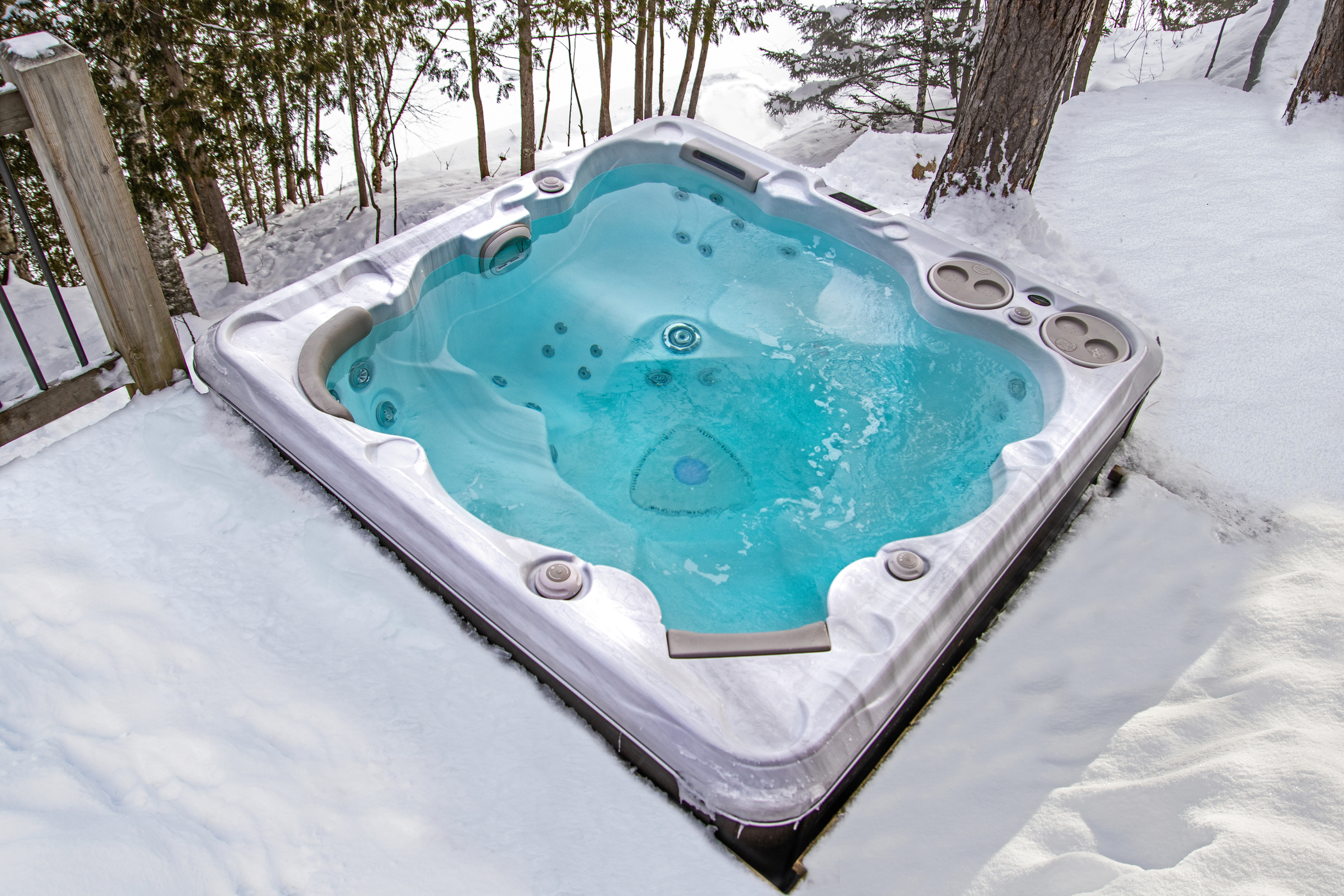Your Ultimate Guide to Conserving Energy with Your Hot Tub: Before You Buy

Customers routinely ask about energy efficiency when looking at hot tubs. It’s a core concern for anyone. Sometimes the issue is cost. Sometimes the issue is the environment. But everyone wants to know that the hot tub they are considering is as energy efficient as possible.
Since we get asked about energy efficiency so frequently, we wanted to write this article with our best advice on ensuring your hot tub is as energy-efficient as it can be. We have broken it up into two parts:
- Before you buy your hot tub: What to look for
- After you buy your hot tub: What to do
No tip we can give you will take your costs down to zero. Cars, homes, you name it, they need energy to operate. But we do hope that after reading this, you’ll have a solid understanding of how to make sure your hot tub is as energy efficient as possible.
Before You Buy Your Hot Tub: What to Look For
There are a handful of key factors to consider when looking for a hot tub and ensuring it is as energy efficient as possible. Most of them you will be able to look for online. Some of them you may want to confirm with your retailer before you buy.
Aspects to consider include:
- The number of pumps.
- The amount of power your pumps use.
- The type of insulation.
- Deciding on 220V vs 110V.
- Why California matters no matter where you buy your hot tub.
Hot Tub Energy Efficiency: Number of Pumps
In general, we recommend buying hot tubs with two pumps to conserve energy costs. A basic rule of thumb is that something that has to work harder uses more energy than something that doesn’t have to work as hard.
So two pumps lighten the load. With two pumps, a smaller circulation pump takes care of the circulation while another filtration pump powers the jets. Neither is taxed this way
With a one-pump system, one larger pump takes on both duties. That means you’re running a large pump to do the job of a small one, which creates a small bit of inefficiency.
One-pump hot tubs are commonly sold. They are less expensive to buy than two-pump hot tubs. But two pumps save you money in the long-term because they are more energy efficient.
Hydropool takes the same approach with 110V vs 220V. With 110V, which is a standard plug-in, you can either run your heat or your pumps, but not both at the same time. And everything is working as hard as possible to do so. At 220V, you have additional power, and nothing is taxed as a result.
Hot Tub Energy Efficiency: More Power Isn’t Always Your Friend
It’s not always as simple as more equals better. In some cases, more power is more than what you need and is just costing you money – if you’re using it.
- Be careful of any hot tub company that makes a big deal of how powerful its pumps and motors are.
- Another sign to watch is if it puts a significant emphasis on the large number of jets it has.
Both of these elements will end up sucking up power you don’t need, causing waste. Hot tubs by leading companies are usually built with an efficient number of jets and power-appropriate pumps. Or you can buy hot tubs with super-turbo power-sucking boosters and hundreds of jets that you don’t need and just drain your wallet.
Hot Tub Energy Efficiency: Cover Up
Energy efficiency is about making the most of the power you use. So the cover on your hot tub matters a great deal. It’s similar to having a toque on during the winter: You lose a lot of heat up top. A proper hot tub cover, at least four inches thick, keeps the heat sealed in your hot tub. Hydropool also insulates the baffle – the strip down the middle of the hot tub where it folds, because we noticed that area can be responsible for a lot of heat loss.
Hot Tub Energy Efficiency: Insulation Matters
There are many types of insulation for hot tubs and all of them function as insulation. But they aren’t all as energy efficient.
Full-foam is a common type of insulation. It involves cramming every inch of your hot tub cabinet with insulation. It works. We know because Hydropool used this system for years.
But it’s not as energy efficient as what we do now, which is why we switched. Today we use a thermal blanket, with a silver side, similar to how some winter jackets work. That layer of insulation reflects the heat back at the hot tub, helping to heat the water. It traps the heat into the cabinet, similar to how a triple-paned window works in your house. The system is so effective at translating energy into usable heat, you need vents to open up in the summer and close them in the winter. You can’t do that with full-foam systems.
Hot Tub Energy Efficiency: Why California Matters
California has the most strict energy-efficiency rules in the world. So always ask if the hot tub can be sold in California (all of Hydropool’s hot tub and swim spas can). If it can’t, there’s a good reason why and it’s likely you’re taking a risk you don’t need to take.
If you live in a cold weather part of the world, this article on the best cold-weather hot tubs might be more helpful to you.
How to Conserve Energy with Your Hot Tub: Before You Buy
There are a few things you can look for that will help you make a good choice when it comes to energy-efficient hot tubs. We are asked frequently about what can be done about ensuring hot tubs are as energy efficient as possible. We’re also asked about what to look for when buying a hot tub when it comes to energy efficiency.
That’s why we wrote this article. Because we wanted people to know what to look for and what matters most when buying a hot tub. We know it can be a tricky space to navigate: Sometimes more power is your friend and sometimes it isn’t. Sometimes what seems like the best insulation isn’t the best for you!
We hope this article has helped, but if you’d like someone else to talk to, we’d encourage you to reach out to the Hydropool dealer nearest you.






